METASITU
SNAKE
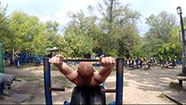
Snake is a piece where we explore how hypermasculinity performs and informs the built environment. The interesection of biological architectures and privilege in the public realm.
TDCU IZZ
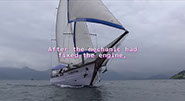
The chronicle of increasing isolation of a group of artists attempting to reach the World's most remote human inhabited place, the island of Tristan da Cunha.
THE VISIT

Meziara is a village in Northern Lebanon, where most of its residents do business in Nigeria for most of the year, before returning every summer. The suburb to an invisible city.
TORA BORA
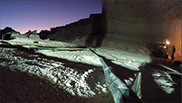
The extraction and export of 'Jerusalem Stone' is one of the most lucrative businesses in the Palestinian Territories, and remains highly unregulated. Everyone wants a piece of the holy land.
MEMENTO LOCI

Souvenirs are tokens that help to perpetuate spatial narratives. Mass produced around the world, they serve as a vehicle through which power narratives are unfolded and displayed.
MEMENTO LOCI unpacks some of these strategies.
14th DISTRICT
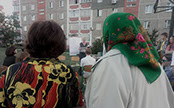
Slavutych was built to rehouse the workers of the Chernobyl Nuclear Power Plant. It is made up of 13 districts, each inspired by a different Soviet city. With 86, we are building a new district based on Athens.
STOP OVER CITY

Moscow City is a decaying business district in Central Moscow. By linking it to the two largest airports in the city and giving it the status of 'international transfer zone' we would revitalize this vacant territory.
STATES, STATUS,
STATUES & STATUTES
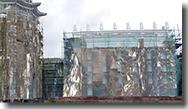
VDNHk park in central Moscow is a spatial technology that serves to advance an imperialistic idea based on an old regime.
(re)appropriating (post)soviet narratives.
NATION STATE OF MIND

Nation State of Mind proposes an alternative understanding of the nation in a post-national world. What is the role of territoriality and locality in Ecumenopolis?
#mariupolwillnotdie
#itistheworldthatwillend

Mariupol is a mono-industry town in Eastern Ukraine. Its population has been shrinking since the collapse of the USSR. This is a manifesto to embrace its shrinking condition and work with it.
EXPEDITION TO ECUMENOPOLIS

Expedition to Ecumenopolis is a series of workshops that we deliver to different groups in order to collectively think about ideas evolving around contemporary urbanism in the age of hyper-globalisation.
VOCABULARY FOR ECUMENOPOLIS
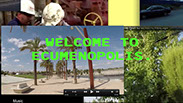
In the era of Globalization and the Antropocene, we find that there are a new set of urban qualities/phenomena that take place globally. Here is a glossary that attempts to identify some of those.
ECUMENOPOLIS EXHIBITIONS
When the Apollo 8 crew captured the photo“Earth Rise”in 1962, it was the first time that, as humans, we were able to see a photo of our home, the Earth. The first time for self-reflection. It was not until a few years later, in 1972, when the Apollo 17 crew captured“22727”(also known as“Blue Marble”), that the planet Earth was photographed as a whole, as a sphere. What was important about this second photograph was not so much the depiction of land masses, water bodies, and cloud formations—on-the-ground technology could corroborate that data—but rather the ability to represent our globe as one, with all its resources, processes, and living beings captured in one single frame. Our fragile vessel, floating alone in the vast emptiness of the Universe. This vision of the Earth and its negative—Outer Space, the other—presented a new scale; a scale indicating how the borders that had been cast all around the world for centuries, from city-states to nation states, could be made redundant.
Around the same time, in 1967, the urban planner Constantinos Doxiadis, coined the term“Ecumenopolis” in proposing to consider the whole planet as one continuous city. Doxiadis described a total city fueled by population growth, mobility, and access to nature. At METASITU we have contextualized the notion of Ecumenopolis in the twenty-first century. We understand this planet-wide city not as a divorce between the urban condition and the inhabitation of territory, but rather as a series of social practices and intangible networks that articulate and support our existence, from GPS to SMS, DIN, SIM, NAFTA and CFA francs.
We live within complex matrixes that transcend urban/rural dichotomies and render local, regional, and national borders obsolete. The externalities of our modern condition bypass previously insurmountable divides, as in the case when sales of a certain type of mobile phone in Lima changes the mining landscapes around Lubumbashi, provokes acid rain in the Okavango Delta and triggers new form of inhabitation in Shenzhen.
No place on the planet has escaped the consequences and effects of modernity and urbanization, not even the world’s most remote human inhabited place on Earth. The British Overseas territory of Tristan da Cunha, an island in the middle of the South Atlantic Ocean where 266 people live, is an enclave that can only be reached after a week at sea from either South Africa or South America. Seldom attended by boats delivering parcels and passengers, in 2005, the island’s Governor wrote a letter to the House of Lords in London requesting for a colonial amendment to change Tristan’s postcode to a more “UK-sounding one” in order to ease online purchases from Amazon and eBay. Whereas these people's existence might be remote and isolated, the internet introduced Tristanians to a set of practices and tastes that were subject to hashtags, eBay bids and delivery options.
Special Economic Zones, international trade agreements, platform economies: as new critical situations emerge within this planet-wide city, so do a series of novel spatial strategies with spatial repercussions. New tactics of inhabitation that, like franchised fast-food chains, can be exported to new areas; a set of practices, like swiping right on Tinder, Western Union money transfers, looking for WiFi, knowing how to navigate a metro system or recognizing celebrities and toothpaste brands. Practices that might not affect every single person (yet), but which have an unprecedented geographical reach and territorial depth.
With Ecumenopolis we propose a new sense of locality by expanding the notion of the city to the whole globe, by going beyond the legislative geographies and imaginary—yet real—lines that dismember territories and societies. It is an alternative that surpasses the nation state, whose structural pillars—standardized vernacular language, national mythology/values and collective information/gossip—are being challenged by today’s world. Internet languages, memes and ESL (English as a Second Language) are becoming the new linguistic vernaculars. Information spreads on social media with the influence of marketing companies subliminally present in your BuzzFeed selection, Facebook timeline and Twitter trending topics. Global corporations are setting new mythologies and values that customers want to consume more than the product in question, like the elegance and sophistication of the new iPhone or the familiar coziness of Starbuck’s Spiced Pumpkin Latte. The notion of identity is becoming increasingly detached from locale and attaching it to the realm of the intangible, fluid, and malleable.
Ecumenopolis goes beyond the notion of the “global city,” for it is not a series of nodes subject to the effects of globalization connected to each other, but rather allows us to conceive the totality of the Earth as one continuous city. This idea is accompanied by a series of social practices and knowledges, thus transferring the urban condition from the legislative or the built realms into social and intangible networks.
*** This text first appeared on the catalogue of the exhibition 'METASITU: ECUMENOPOLIS' ( curated by Eszter Szakacs at tranzit.hu ) and was edited by Eszter Szakacs and Nick Axel.
[from Greek: οiκουμένη, meaning ‘world’, and πόλις meaning ‘city’]
The whole world is urban.
A jungle, a desert oasis, a village in the North or a resort by the sea... we all live in the same city.
Not cities that resemble one another, but the same.
It is in this “same city” where one finds familiar toothpaste brands and fashion retailers; where one is able to navigate metro systems and find WiFi signals.
The same city that is prey to the territorial techniques of late capitalism. The same gentrification steps.
The same city that is drawn in AutoCad, planned with GIS and seen through the eyes of Google Street View.
The same city that you just instagrammed.
A walled city whose last frontier is the stratosphere.
The whole world is one total city.
ECUMENOPOLIS
US